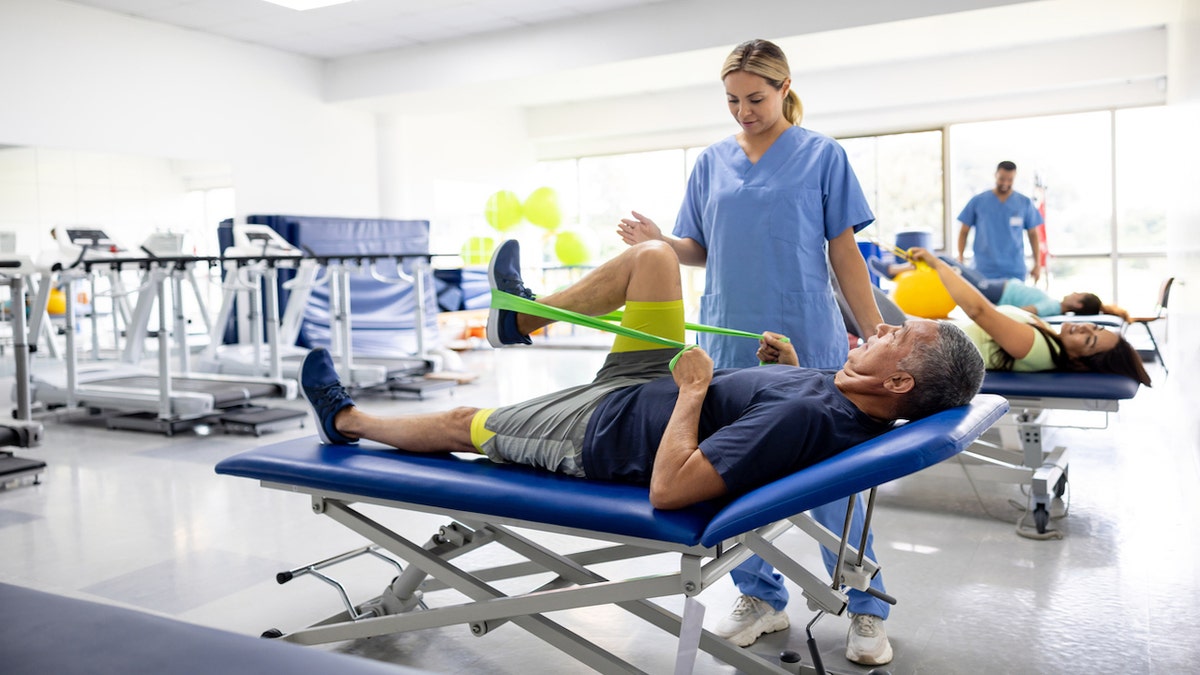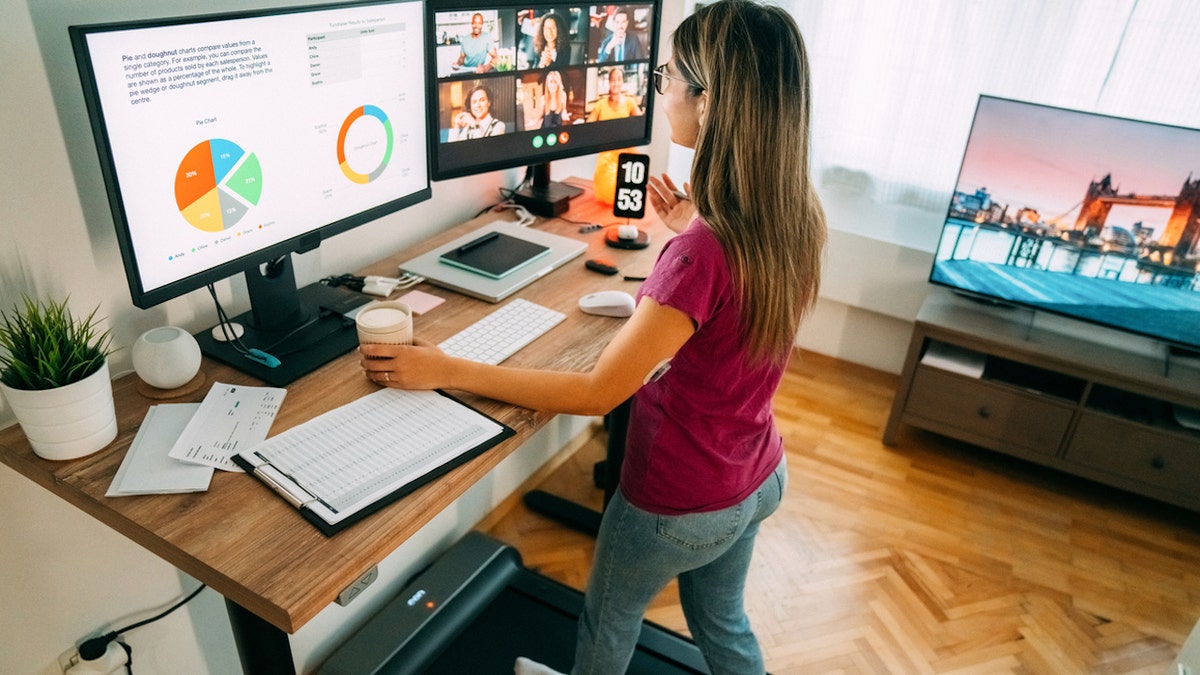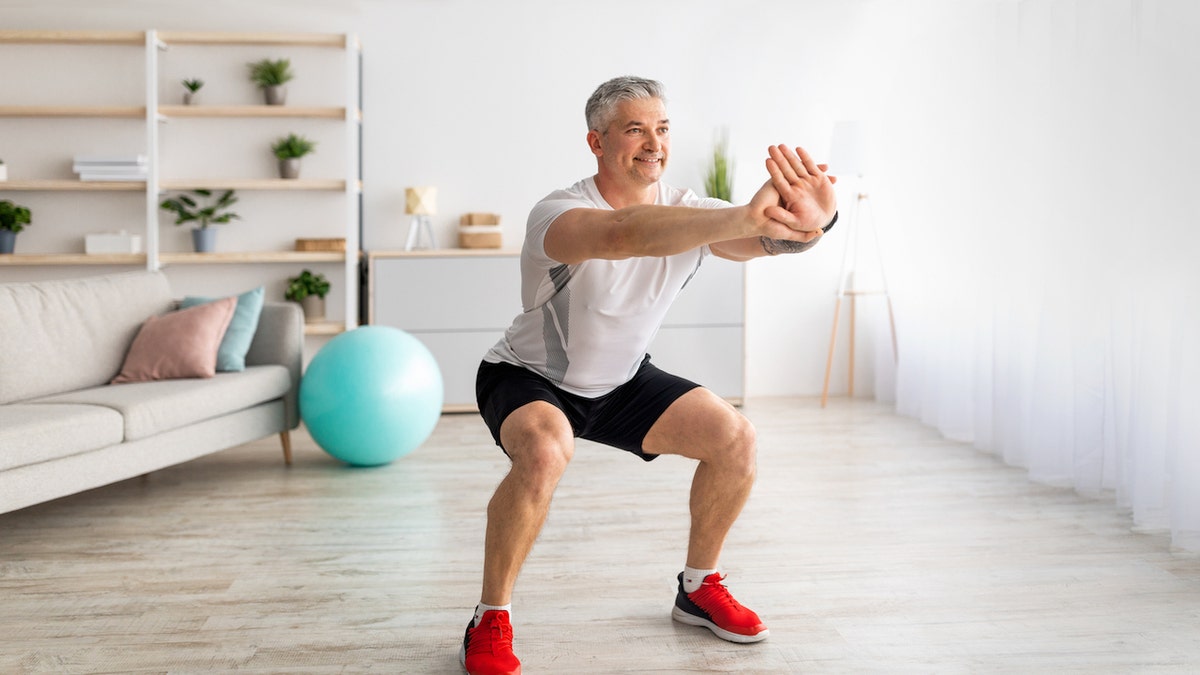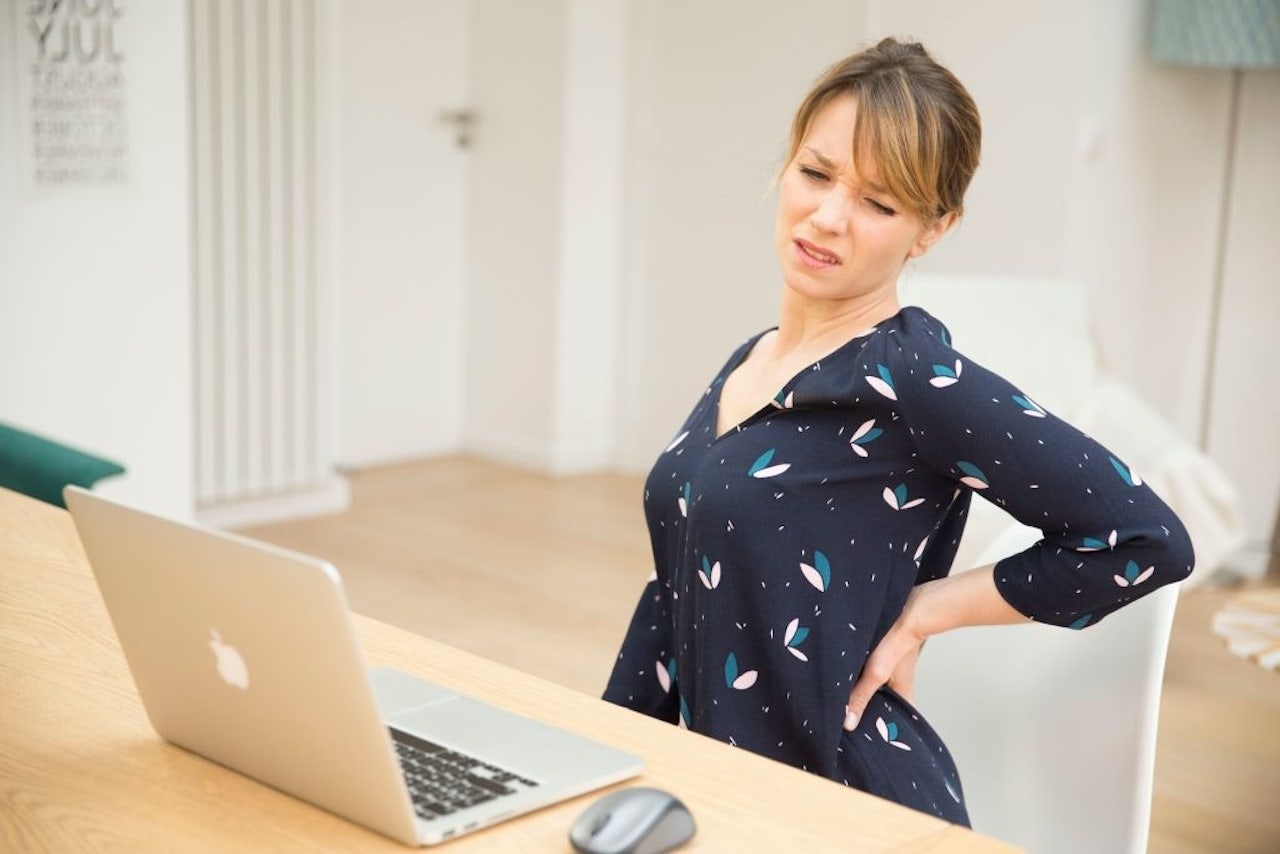Sitting for prolonged periods is known to raise the risk of heart disease, high blood pressure and obesity — but it can also contribute to “dead butt syndrome,” according to health experts who specialize in musculoskeletal injuries.
The condition, otherwise known as gluteal amnesia, involves numbness or pain in the buttocks, or pain in the upper thigh and hip, after prolonged sitting.
“The term gluteal amnesia, or ‘dead butt,’ can correlate with difficulty feeling or accessing glute activation in a particular exercise or activity,” Dr. Carrie Pagliano, a physical therapist in Arlington, Virginia, and spokesperson for the American Physical Therapy Association (APTA), told Fox News Digital.
WORKOUT AND DIET TIPS TO GAIN MUSCLE AND LOSE FAT
Causes and symptoms of ‘dead butt syndrome’
Over time, sitting for long periods can result in a “tug of war” scenario between muscles in the front (hip flexors) and those in the back of the hip (the glutes).
Sitting for prolonged periods can contribute to “dead butt syndrome,” according to health experts who specialize in musculoskeletal injuries. (iStock)
“The hip flexors shorten and tighten, and the gluteal muscles get over lengthened, leading to inefficient muscle activation,” Tamar Amitay, a licensed physical therapist and owner of Thrive Integrated Physical Therapy in New York City, told Fox News Digital.
This muscle imbalance can literally become a “pain in the butt,” especially for those who sit for long hours on a daily basis, experts agreed.
“The term ‘dead butt syndrome’ is simply a weakening and deconditioning of the glute muscles and associated tightening of muscles opposing them, creating an imbalance of the musculature and function,” Edward Farrell, an orthopedic physical therapist at Physical Solutions Physical Therapy and Fitness on Long Island, New York, told Fox News Digital.
OZEMPIC AND WEGOVY COULD LEAD TO MUSCLE LOSS, EXPERTS SAY, BUT PREVENTION IS POSSIBLE
Farrell often sees patients who suffer from pain and tightness in the hips and buttocks, along with discomfort in the lower back.
“Older patients will often report long days at work sitting at their desk, and younger patients may have a habit of spending hours playing video games or social media surfing,” he told Fox News Digital.
“Once we can resolve the acute issue, the take-home message is to get up and move around every once in a while.”
With dead butt syndrome, the glute muscle doesn’t actually die, but rather “shuts down,” meaning it does not contract as efficiently, the experts said. This can lead to other issues down the road.
“The condition can actually become quite serious,” Farrell warned.

The muscle imbalance can literally become a “pain in the butt,” especially for those who sit for long hours on a daily basis, experts said. (iStock)
“The glutes — the gluteus medius in particular — act as stabilizers, providing lateral support with walking and running,” he went on. “If these muscles become weakened and less efficient, more stress is passed onto the lower back and other areas of the hip and thigh.”
When the pelvis is not stabilized, the hip can drop on one side, causing stress and pain in the hip and spine and even down the kinetic chain to the knee, according to Amitay. This can also affect how a person walks.
Diagnosis of the condition
If someone is experiencing dead butt syndrome, a physician may recommend the Trendelenburg test, which can indicate weakness of the glute muscles responsible for hip abduction, according to experts.
With the test, the patient stands on one leg (holding onto an object if needed to avoid falling) for up to 30 seconds. If the pelvis drops on the contralateral side (the side not bearing weight), it indicates weakness in the gluteus medius and gluteus minimus muscles, according to peer-reviewed studies.

In many cases, physical therapy sessions may be needed to properly strengthen the muscles and help with flexibility, an expert said. (iStock)
Some patients may complain that they don’t feel their gluteal muscles contract strongly when performing glute-targeted exercises, such as a bridge, physical therapists noted.
“If you’re doing glute exercises and can’t feel your glutes, it’s worth consulting with a physical therapist to determine why you’re experiencing difficulty accessing these muscles,” Pagliano told Fox News Digital.
Recommended treatment
Treatments for gluteal amnesia may include therapies to help alleviate pain and tightness, such as moist heat, electrical stimulation, ultrasound and ice, Farrell noted.
CLICK HERE TO GET THE FOX NEWS APP
“Once symptoms lessen, exercises [are performed] to strengthen the abductors and glutes, such as squats, side clamshells and side leg lifts, as well as stretching for the hip flexors, ITB band and piriformis,” he said.
“Once we can resolve the acute issue, the take-home message is to get up and move around every once in a while.”

Using a standing desk is one way to help prevent dead butt syndrome, experts advised. (iStock)
In many cases, physical therapy sessions may be needed to strengthen the muscles and increase flexibility, according to Pagliano.
Targeted exercises that optimize core strength and muscle balance can also help to prevent and reverse dead butt syndrome, she said.
CLICK HERE TO SIGN UP FOR OUR HEALTH NEWSLETTER
Lifestyle changes, such as using a standing desk and setting a timer to remind you to get up from your chair and move around, can also help, Amitay advised.
Several physical therapists recommended getting up every 30 minutes and walking around for a minute or two to help mitigate the negative effects of sitting for too long.

“Once symptoms lessen, exercises [are performed] to strengthen the abductors and glutes, such as squats, side clamshells and side leg lifts, as well as stretching for the hip flexors, ITB band and piriformis,” a physical therapist said. (iStock)
Standing during phone calls and taking walks during lunch hours can also help decrease the amount of time spent sitting, they advised.
Following a general exercise routine that incorporates stretching, strengthening and cardio workouts is also widely recommended.
For more Health articles, visit www.foxnews.com/health
Those who are experiencing symptoms of dead butt syndrome should contact a physical therapist or physician who specializes in musculoskeletal injuries.
